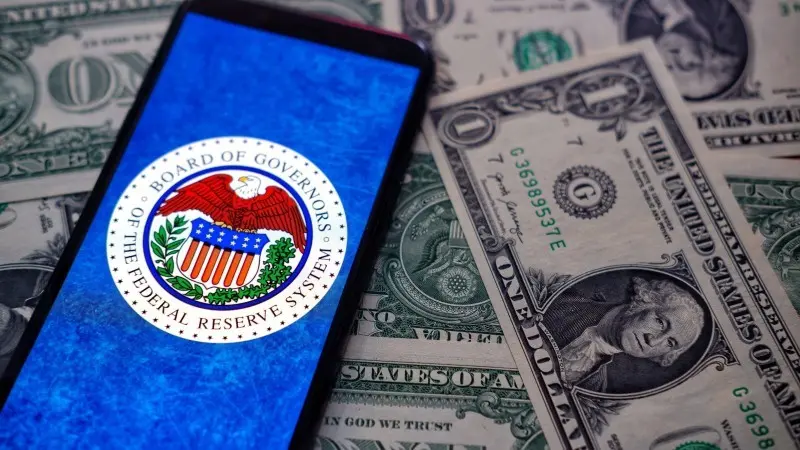FX Talking: Dollar bear trend takes a rain check
As we enter March, what has become clear to financial markets is that inflation is proving far stickier than most had felt at the start of the year. The dramatic re-pricing higher of global money market curves has lifted the dollar and presented an increasing headwind to risk assets. A return to the disinflation and weaker dollar narrative will have to wait.

Executive Summary
This month's FX talking provides a few tweaks to our 2023 FX forecasts largely to incorporate the 'higher for longer' central bank policy narrative. As detailed in our 'March Monthly: the search for a new equilibrium' we now expect the Fed to be hiking rates into June. Equally, we look for at least another 100bp of ECB hikes by the summer. Tighter central bank policies into slowing economies are keeping yield curves exceptionally inverted and only increasing the risk of a correction in the equity or credit space. This is hardly the environment for the kind of benign dollar decline seen towards the tail-end of last year.
What to expect in the month of March? The main focus will be US activity data and the FOMC meeting. On the former, the big question is whether the bounce in January US activity data (payrolls, retail sales etc) was largely weather and seasonal adjustment related. Our US economist, James Knightley, thinks it was. Softer activity data could soften up the dollar a little this month. But March looks too early now for Fed Chair Powell to heavily push the view that a 'broad disinflation process has started'. Instead, a 25bp hike on March 22nd, the promise of future increases and what could prove a substantial upward revision to the 2024 Dot Plots look likely to deter dollar sellers this month.
On the other side of the Atlantic the newly hawkish ECB has actually seen the EUR money market curve re-priced more aggressively than that for USD. This is providing some support for the euro. A 50bp hike at the March ECB meeting and the promise of more should help to defend the lower end of a 1.05-1.10 EUR/USD range this month. Perhaps a little more vulnerable to ongoing dollar strength this month is sterling. We think the Bank of England is much closer to a pause than the Fed or the ECB. A more modest 25bp hike on March 23rd could prove some downside risks to GBP/USD - perhaps to the 1.16/18 area.
And very much in focus will be the Japanese yen. Two clear event risks are the Bank of Japan meetings March 10th and April 28th. New BoJ Governor Ueda is at first expected to continue the dovish policy of his predecessor. Yet any surprise tweak to BoJ policy (like the one seen in December) could see USD/JPY ending the month nearer 130 than our current forecast of 135. Elsewhere in the G10 space, we expect range-bound commodity currencies - caught in the crosswinds of a hawkish Fed and the China re-opening story.
In terms of the bigger picture, we still look for lower dollar levels by the end of the year. US disinflation should be a lot more evident by this summer and a Fed easing policy by year-end should see some bullish disinversion of the US yield curve and a broadly weaker dollar. We target EUR/USD at 1.15 for December.
In the EMEA space, CEE4 currencies have enjoyed a strong February. Further gains may be harder to come by in March. Here, the Polish zloty still faces the uncertain story of whether banks can collect interest on invalidated FX mortgages. Elsewhere, the South African rand has failed to be buoyed by support for state utility company Eskom. And the normally solid Israeli shekel now seems to be weighed by domestic political uncertainty. This may force the Bank of Israel to intervene and sell FX.
In Asia, the Chinese renminbi (and Asian FX in general) has seen its early-year gains unwound. March may be too soon to expect a significant recovery here - as many countries deal with weak export markets and high core rates. Do, though, look out for an announcement on March 30th as to whether Korean and Indian government bonds get elevated into the FTSE Russell WGBI and EMGBI local currency bond indices respectively. Inclusion would lift their currencies.
Finally, the world's best-performing currency this year is the Mexican peso. It offers the best risk-adjusted returns and Mexico can now evidence itself as a beneficiary of nearshoring. Tesla announced its next gigafactory would be built there and triggering potentially US$5bn of inward investment. USD/MXN may well trade down to 17.50 over the coming months. The Brazilian real looks less of an attractive destination as politics and central banking collide. Equally the Chilean peso may not rally too far given that copper looks to have a lot of good news already in the price and the central bank might be keen to rebuild some of the FX reserves spent defending the peso last year.





